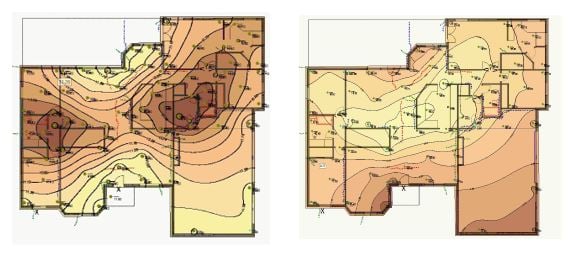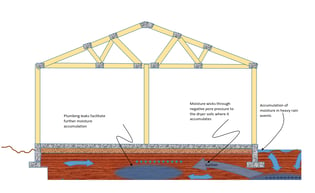Rules of Thumb in Diagnosing Foundation Problems part VII: The Age of the Structure
How old is the structure? There is a lot more to this question than meets the eye…
First the obvious; older structures have more time to exhibit signs of stress, have wear & tear with more time to interact with soils, wind, thermal movement and other forces of deterioration. Over time, these will accumulate and weaken the structure and start to interact with each other.With soil that has been dry for many years, has typically poor drainage with added watering and all of the 4 mechanisms of moisture accumulation (see my previous post, click HERE), water begins to accumulate under the foundation system.
It goes without saying that accumulation must start on the edge, unless there is a plumbing leak. As a result, moisture added with expansive soil means heave… on the edge! Almost all of the newer foundations that we have measured over the years, have edge heave. Since most homes built in the last 15 years have been post tension slabs, we have come to expect edge heave with post tension systems. So the question has become, is that because they are post tensioned? Or because they are new?
I have recently posted 2 examples of newer, conventional foundation type with edge heave (click HERE). Conversely, I have seen a very few PT foundation systems with center heave. They were all older homes approaching 20 years old. While this is not conclusive, it does hint to time rather than type of foundation system as to the performance system, but does not rule out design as a cause.
I have performed multiple floor level surveys on the same house, over more than 10 years, using a subtractive topo to delineate the movement over time. This particular house was a conventional foundation system. See Below:

The topo on the left was the original topo. The one on the right was a subtractive topo over time. In other words how it moved since the first topo.
Clearly it started out as an edge heave within the first 10-15 years. After that, you can see a clear shift in pattern toward a center heave. This is an accurate example of what we see many times over and over.
In summary, newer homes usually experience edge heave and after 20 years or so tend to accumulate moisture in the center.
Next: Rules of Thumb VIII: https://www.foundationaz.com/blog/rules-of-thumb-part-viii-interpreting-signs-of-stress
Previous: Rules of Thumb VI: https://www.foundationaz.com/blog/rules-of-thumb-diagnosing-foundation-problems-vi






